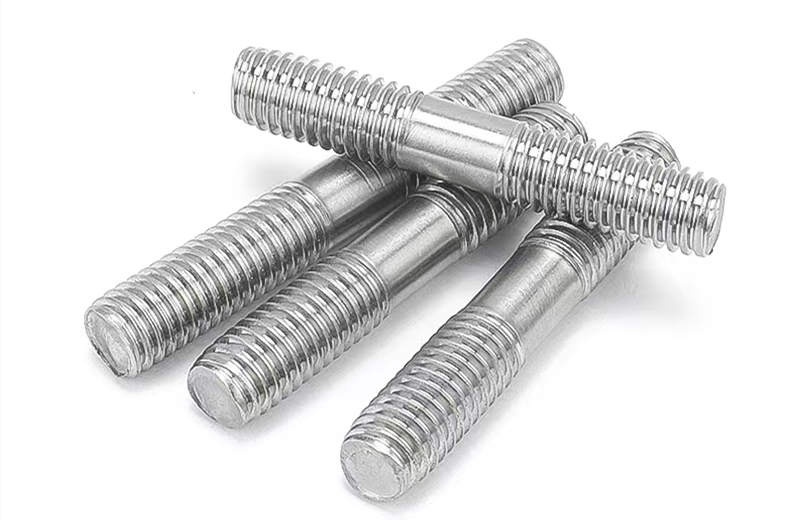Exploring The Many Meanings Of Stud
Have you ever stopped to think about how many different ways a single word can be used? It's almost, in a way, quite surprising how much meaning can be packed into just a few letters. Sometimes, a word we hear or say often has a history that stretches back through time, changing its shape and sense as generations come and go. We might use it without really considering its full range of uses, or where it came from in the first place.
This particular word, you know, has a really interesting story, actually. It's one of those words that pops up in so many different conversations and situations, from talking about old buildings to something you might wear, or even animals. It’s pretty common, yet its different meanings can feel a little far apart, like they don't quite belong together at first glance. We're going to take a closer look at what this word means, and how it shows up in our language, giving us a better idea of its many faces.
So, get ready to discover the many sides of a term that's a bit more versatile than you might have first guessed. We'll talk about its beginnings, how it helps put things together, what it means for certain animals, and even how it can describe people. It's really quite fascinating to see how one small word can have such a big impact across different parts of our daily conversations, wouldn't you say? It's just a little peek into the richness of language.
- Is Eminem A Clone
- Julie Bristow Wendy Crewson
- New Winco Stores Opening 2025
- Tony And Hannah The Mole
- Best Jav Actress
Table of Contents
- What's the Story Behind This Word?
- "Stud" in Our Daily Lives
- The Animal Kingdom's "Stud"
- When "Stud" Describes a Person
- Unexpected Places for "Stud"
- "Stud" Around the Globe
What's the Story Behind This Word?
It's pretty neat, actually, to think about how words get started and then change over time, isn't it? The word "stud" has a background that goes way back, really, to a time when English was quite different from what we speak now. We're talking about Old English, where words like "studu" or "stuthu" were used. These older versions of the word usually pointed to something like a post or an upright prop, something that stood straight up and helped hold things in place. It's interesting to consider that, at its very core, the word often had to do with support and structure, you know, something firm and standing tall.
The Ancient Beginnings of "Stud"
If we look a bit further into its history, we can see that this word, "stud," is related to some other languages too, which is just a little bit cool. For instance, there's a German word, "stützen," that means "to prop." So, it seems that the idea of something holding things up, like a support beam or a sturdy upright piece, has been around for a very long time, across different tongues. Then, as time went on, into what we call Late Middle English, the word started to pick up a new meaning. It began to describe something like an ornamental metal knob, a small, decorative bump that might stick out from a surface. This was a bit of a shift, from something purely functional to something that also had a bit of flair, wouldn't you say? It's really quite a journey for a word, from a simple post to a fancy bit of metal, more or less.
"Stud" in Our Daily Lives
So, when we think about the word "stud" today, it pops up in quite a few different places, doesn't it? You might hear it used to describe a small, round piece of jewelry, or perhaps a part of a building that helps keep the whole structure standing. It's fascinating how a single word can have such varied applications, from something you might wear for adornment to a hidden but vital part of your home. The way we use it, you know, really depends on the situation, which is why context is pretty important when you come across it. It's almost like the word itself is a bit of a chameleon, changing its colors to fit its surroundings.
- Catryona Lei Scandal
- Eminem Is A Clone
- Is Chelsea Swift Married
- Kenny Loggins Siblings
- Padma Mccord Wikipedia
How Do We Use "Stud" for Decoration?
One common way we see "stud" is as a decorative item, particularly something made of metal that sticks out from a surface. You might find these small, raised pieces on clothing, like a leather jacket, where they could even spell out a word or create a cool design. They're often used to give things a bit of an edge, a touch of something extra, you know? It's a way to add a bit of visual interest, to make something stand out. And then there are earrings! A very simple kind of earring, like a single pearl attached to a straight piece of metal that goes through your ear, is also called a "stud." It’s a classic, understated piece of jewelry that many people like. So, in this sense, a "stud" is often about adding a small, distinct element that catches the eye, whether it's on a jacket or in your ear, really.
Building Walls with a "Stud"
Now, shifting gears a bit, the word "stud" also has a very practical, structural meaning, especially in construction. When you're talking about the framework of a wall, you know, the hidden skeleton that holds everything up, those upright posts are called "studs." These posts are absolutely necessary for supporting things like sheets of drywall or lath, which are the materials that make up the finished surface of your wall. Without these sturdy, vertical pieces, a wall wouldn't have the strength to stand tall and straight. They're often out of sight once a building is finished, but they're incredibly important for keeping things stable. It's a bit like the bones of a house, providing the necessary support for everything else to be attached, and it's pretty vital, actually.
The Animal Kingdom's "Stud"
It's rather interesting how the word "stud" takes on a whole different meaning when we talk about animals, isn't it? In this context, it usually refers to a group of animals, especially horses, that are kept mainly for breeding purposes. This isn't just any group of animals; it's a collection specifically chosen for their ability to produce offspring, usually with desirable traits. The word itself, when applied to a male animal, suggests a certain quality or lineage, something that makes them particularly valuable for passing on their characteristics to the next generation. It’s about ensuring the continuation of certain lines, you know, and improving the stock, in some respects.
What Makes an Animal a "Stud" for Breeding?
When we talk about a male animal being a "stud," we're generally referring to one that is kept specifically for breeding. This is particularly true for horses, but it applies to other animals like dogs as well. These animals are chosen because they possess qualities that breeders want to see in future generations. Perhaps they have a great temperament, or they're incredibly fast, or they come from a long line of champions. Their purpose, basically, is to reproduce and pass on those good qualities. It's a very important role in animal husbandry, helping to shape the characteristics of breeds over time. So, a "stud" animal is more or less a key player in the genetic future of its kind, you could say.
The Value of a Breeding "Stud"
The cost associated with using a male "stud" for breeding, known as a "stud fee," can vary wildly, you know, depending on the animal's background and reputation. For a local animal whose lineage isn't widely known, the fee might be a relatively small amount. However, for a champion thoroughbred racehorse, for example, the price can skyrocket into hundreds of thousands of dollars. Take Storm Cat, for instance, a famous racehorse who reportedly commanded fees as high as US $500,000 for the right to breed with him. This kind of fee reflects the perceived value of the animal's genetic contribution and the potential for its offspring to achieve greatness. It’s pretty clear that some "studs" are considered extremely valuable assets in their respective animal communities, actually, making them quite an investment.
When "Stud" Describes a Person
Interestingly enough, the word "stud" can also be used to describe a person, and this is where its meaning takes on a different kind of flavor, you know? When someone refers to a man as a "stud," they're often talking about someone who is seen as very attractive and masculine. It's a way of saying that a person has a certain kind of appeal, a strong presence. This usage, however, can sometimes carry other meanings too, perhaps suggesting a man who has had romantic relationships with many different people. So, the context really matters here, as it can go from a general compliment about someone's appearance to something a bit more specific about their romantic life, more or less.
Is Calling Someone a "Stud" Always a Compliment?
When someone is called a "stud," it typically means they are considered very attractive or, you know, quite masculine. It's often used as a compliment, suggesting that the person has a certain kind of charm or physical appeal. However, the term can also imply that a man has a reputation for having many romantic partners, sometimes without a lot of commitment. So, whether it's a pure compliment or carries a slightly different undertone really depends on who is saying it and the situation. It's not always just about looking good; sometimes, it speaks to a particular kind of lifestyle or reputation. The word can be pretty flexible in its meaning when applied to people, actually, and it's worth considering the full scope of what it might suggest.
Unexpected Places for "Stud"
It's truly fascinating how a word can show up in places you might not immediately expect, isn't it? The term "stud" is one of those words that has branched out into various areas, finding new life and meaning beyond its more traditional uses. From the physical world of fasteners and decorations, it has even found a place in the digital realm, which is pretty cool. This just goes to show how adaptable language can be, always finding new ways to describe things and connect ideas. It's like the word itself is a bit of an explorer, constantly finding new territories to inhabit, you know?
"Stud" in the Digital World
In today's connected spaces, you might even find the word "stud" used in relation to online communities and content creators. For example, there's a YouTube channel run by two brothers that features Roblox gameplay and other fun content, and it's simply called "Stud's YouTube channel." This has led to a community forming around it, where people gather to host events, play games together, and generally connect over shared interests. So, in this context, "stud" isn't about physical objects or animals, but rather serves as a kind of brand or identity for a digital presence. It's pretty interesting how a word can jump from physical things to something entirely virtual, wouldn't you say? It's just another way the word finds a place in our modern lives.
"Stud" as a Connection Point
Beyond its decorative uses, a "stud" can also refer to a type of fastener, something that helps join things together. This is a very practical application, where the word describes a small knob, a nail head, or a rivet that is fixed into something. It's about securing pieces, making sure they stay in place. You might also hear about "stud bolts," which are screws that have threads on both ends. These are typically used in situations where it's not possible to drill a hole all the way through a material, providing a way to connect things securely without needing a full through-hole. So, whether it's a tiny decorative piece or a strong industrial connector, the idea of a "stud" often involves something that sticks out or helps to hold things together, in some respect, which is quite versatile.
"Stud" Around the Globe
It's pretty neat to see how a word like "stud" gets translated and understood in different parts of the world, isn't it? When you look at its meaning in various languages, you get a sense of its global reach and how certain concepts carry across cultures. For instance, if you were to look up "stud" in a Chinese dictionary, you'd find a whole range of meanings, covering things like horses or breeding animals, men who are seen as charming or attractive, decorative pieces or metal tacks, and even things like shoe spikes, especially for football boots. It's quite a list, actually, showing how many different ideas are linked to this single word.
Similarly, if you were to check out the word in Korean, you might come across "스터드볼트" (stud bolt), which specifically refers to those screws that are threaded at both ends, used when you can't make a hole all the way through. This shows a very specific, technical application of the word in another language. Knowing the pronunciation, synonyms, and translations of "stud" in various languages really helps to give you a fuller picture of just how widely this word is used and understood. It's a testament to how language adapts and how certain core ideas about protrusions, support, or breeding are shared across different parts of the world, which is really quite something.
So, we've explored the journey of "stud" from its Old English origins as an upright support to its modern uses as a decorative knob, a building component, a breeding animal, a description for a person, a digital community name, and a type of fastener. We've seen how its meanings have expanded and shifted over time, reflecting changes in language and society. From its pronunciation and synonyms to its various translations, the word "stud" truly shows a remarkable versatility, appearing in contexts from construction to jewelry, from the animal kingdom to online spaces. It’s a word with a rich history and a surprisingly wide array of applications.

Types of Stud Fastener: Threaded Stud Bolt, Undercut Studs & Wall Studs

Basic Guide to Screws, Bolts, Nuts, Washers and Studs | KENENG

Stud Bolts – Sigma Fasteners